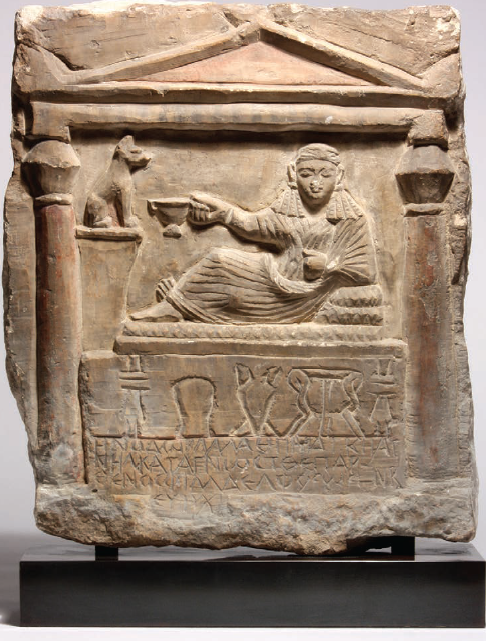
Funerary Stele of Heliodora. Egyptian, 2nd–3rd century, limestone with traces of pigment, H: 43.40 cm, W: 38.00 cm. University of Missouri, Museum of Art and Archaeology (2011.25) Weinberg Fund and Gilbreath- McLorn Museum Fund
The Funerary Stele of Heliodora, Astrologer by Roger S. Bagnall, Cathy Callaway, and Alexander Jones
In this article, the authors present the stele as an object, discuss the iconography and symbolism, and consider the significance of the exceptional string of epithets. This second to third century stele from Terenouthis (Kom Abu Billou), Egypt, commemorates a woman named Heliodora. The combination of adjectives with which she is described makes this a most unusual artifact and document. The epithet mathematikos was a well-established term for astrologer in the Roman period (likewise mathematicus in Latin) and perhaps the preferred term among astrologers themselves. So far as the authors are aware, this is the first known instance of a woman in the Greco-Roman world being designated an astrologer.
Visit here to read the full article.